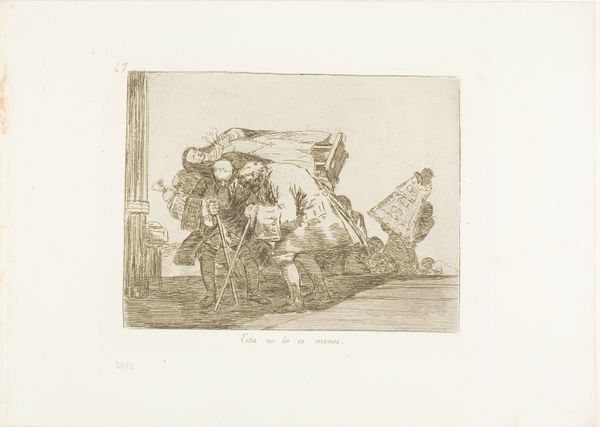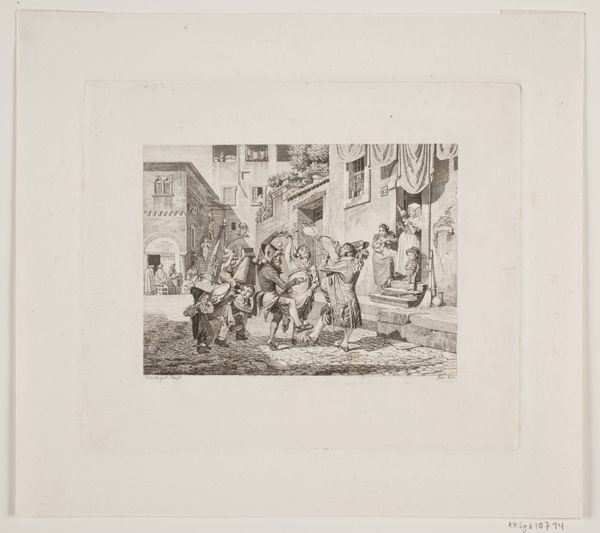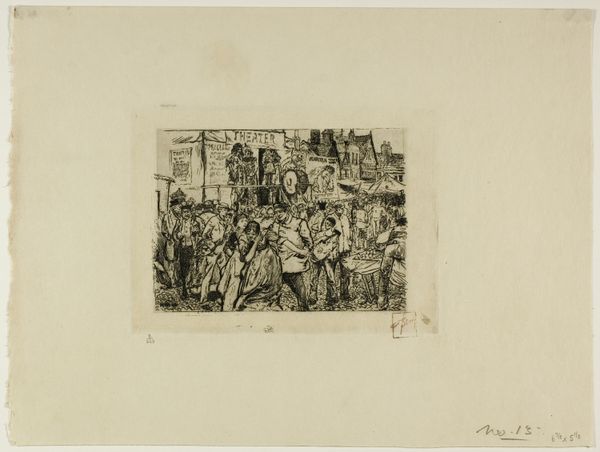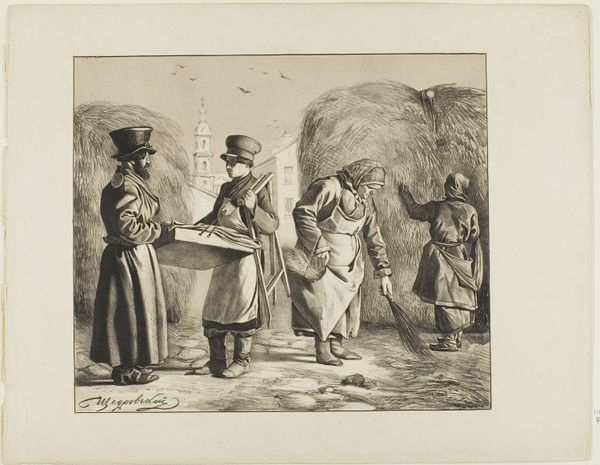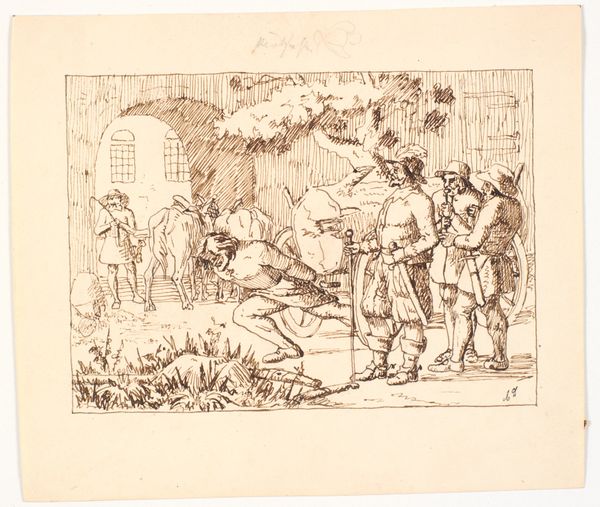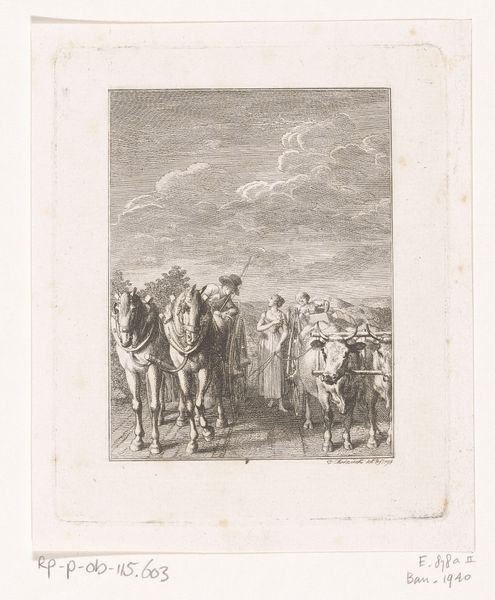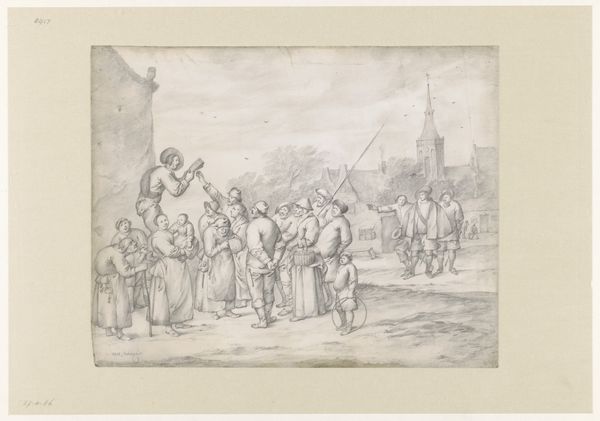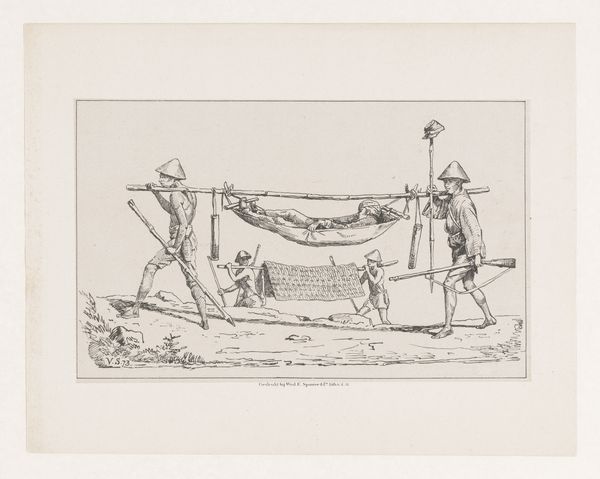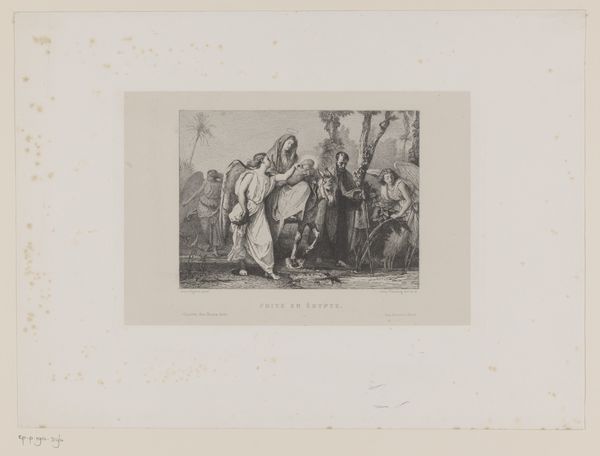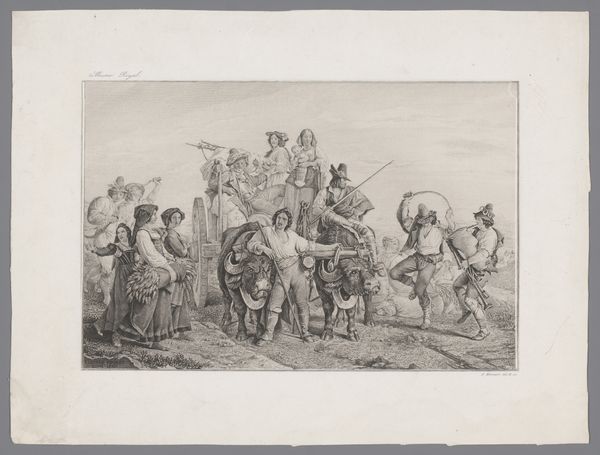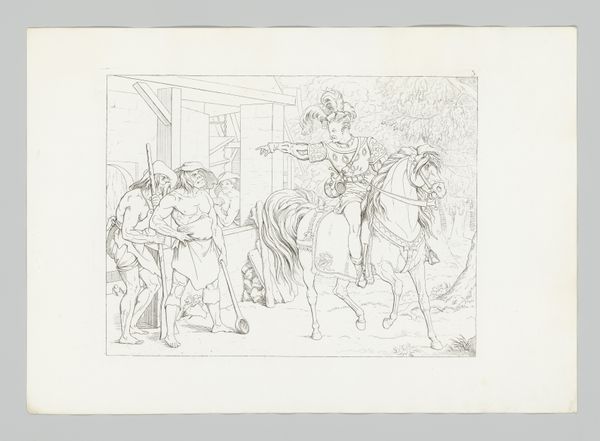
drawing, print, ink
#
drawing
#
ink drawing
# print
#
ink
#
genre-painting
#
history-painting
Dimensions: height 258 mm, width 335 mm
Copyright: Rijks Museum: Open Domain
Curator: This ink drawing by Romeyn de Hooghe, likely produced between 1655 and 1708, is entitled "Two Chinese Farmers and Two Warriors." What are your initial impressions? Editor: There's a curious flatness, almost a decorative quality despite the realistic rendering of the figures. It feels like the artist prioritized pattern and texture over spatial depth. Curator: The textures are meticulously achieved through the printmaking process. Considering the time, the piece's existence reflects an increasing fascination with the "exotic Other" and demonstrates Europe's burgeoning trade with the East and the increased production and dissemination of prints illustrating these encounters. Editor: Precisely. Observe how de Hooghe rendered the costumes – each crease, fold, and stitch contributes to the overall ornamental effect. It seems as much about depicting clothing and accoutrements as it is about representing people. Curator: And note the composition. The figures are tightly grouped, creating a visual density. This reinforces the sense of observation from a Western perspective – capturing the subjects as if specimens. The print format allowed for wider distribution than a painting, impacting public perception of other cultures. Editor: The visual relationships are also interesting. The way the horse and rider are cropped emphasizes their imposing size. De Hooghe uses contrasts of light and shadow to define form but simultaneously flatten the image. Curator: Consider too, the labour involved in creating such a detailed print. The skill of the engraver, translating the design into a reproducible format, deserves attention. The printmaking process makes art available to a wider audience and stimulates dialogue regarding cross-cultural awareness and representation. Editor: The figures’ stances convey authority while their gaze meets the viewer. In this print, their eyes possess power through the carefully applied line work to hold the viewers attention. Curator: A potent combination. De Hooghe’s artwork serves as a valuable historical artifact to examine the dynamic relations, the production of goods and how this all became entwined in a world hungry for something different. Editor: I agree, seeing through this lens certainly enhanced my reading of form and helped unravel historical contexts, and appreciate your focus on the materiality of the medium.
Comments
No comments
Be the first to comment and join the conversation on the ultimate creative platform.

